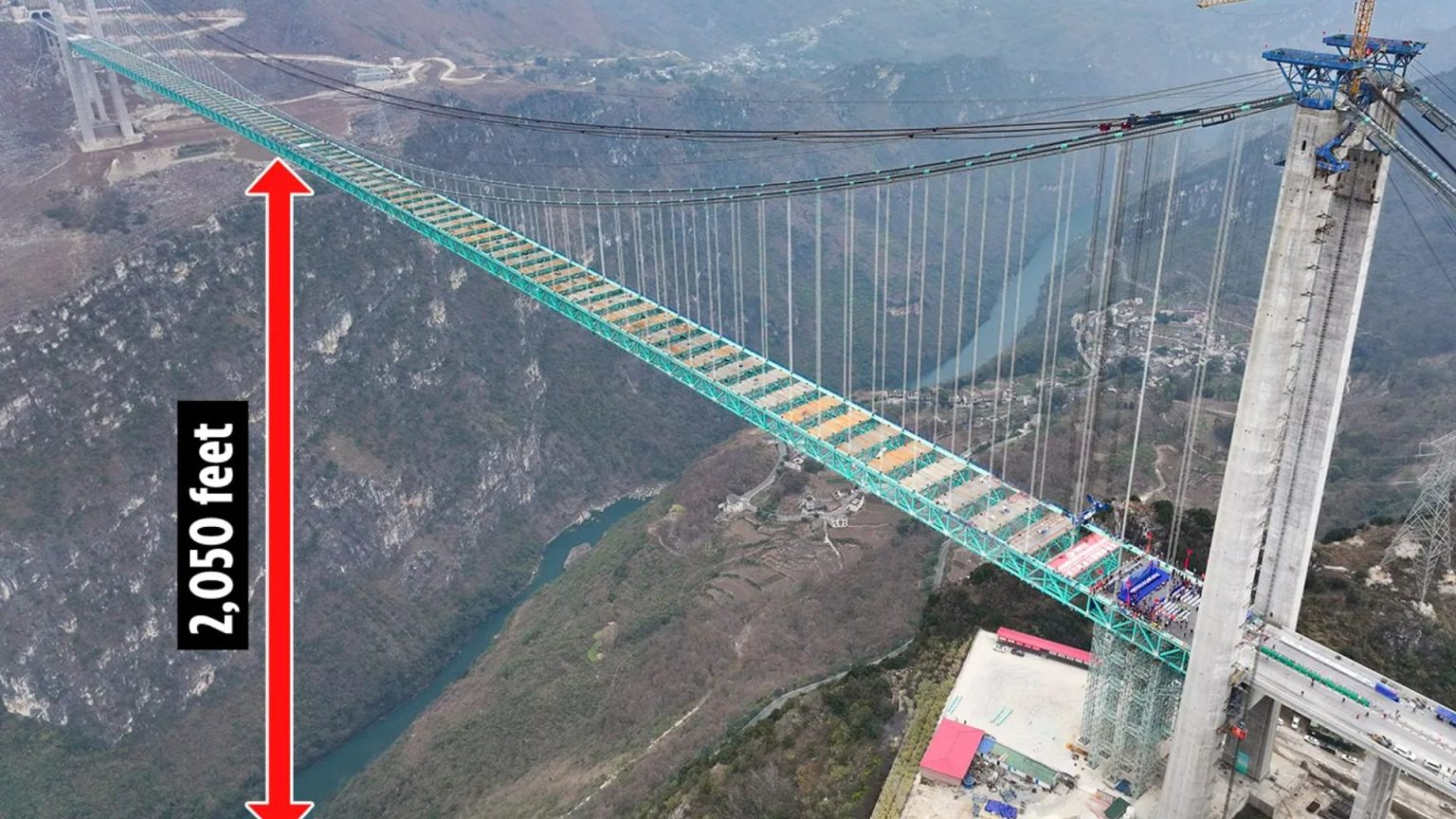The Huajiang Grand Canyon Bridge, an engineering marvel currently under construction in Guizhou province, China, is poised to shatter world records upon its anticipated opening later this year. Towering an astounding 2,050 feet above the Beipan River, it will dwarf even the world’s tallest building, China’s Shanghai Tower, by a significant margin. This colossal structure will claim the title of the world’s tallest bridge, surpassing the current record-holder, the Beipanjiang Bridge, also located in Guizhou province. The sheer scale of the Huajiang Grand Canyon Bridge is difficult to comprehend; it stands nine times taller than the iconic Golden Gate Bridge and twice the height of the Eiffel Tower. This monumental project highlights China’s ambitious infrastructure development and its prowess in engineering feats. The bridge’s completion marks a significant milestone, not only in bridge construction but also in regional connectivity and economic development.
The final piece of this gargantuan structure, a 215-metric ton steel reinforcement segment, was installed on January 20, 2024, signaling the near completion of the project. This crucial component will bolster the bridge’s load-bearing capacity, ensuring its ability to handle the expected traffic volume. With 80% of the construction now complete, the remaining work is scheduled to commence after the Chinese New Year celebrations at the end of January. This massive undertaking, representing a £227 million investment, began in 2022 and is on track to revolutionize transportation in the region. The bridge’s 0.9-mile span will drastically reduce travel time across the Beipan River canyon, transforming a one-hour journey into a mere two-minute crossing. This improved connectivity is expected to have far-reaching economic impacts, fostering stronger ties and integration between the neighboring cities of Guiyang, Anshun, and Qianxinan.
The Huajiang Grand Canyon Bridge is not merely an impressive feat of engineering; it represents a significant advancement in transportation infrastructure and regional development. By significantly reducing travel time, the bridge will facilitate trade, tourism, and communication between previously isolated communities. This enhanced connectivity will stimulate economic growth and improve the quality of life for residents in the surrounding areas. The bridge’s construction is also a testament to human ingenuity and the ability to overcome geographical challenges. The Beipan River canyon, which once posed a significant obstacle to travel, will now be easily traversed thanks to this remarkable structure. The Huajiang Grand Canyon Bridge serves as a symbol of progress and a testament to the power of infrastructure to transform communities.
The construction of the Huajiang Grand Canyon Bridge has been a complex and challenging undertaking, requiring meticulous planning and execution. The bridge’s central load-bearing component consists of 93 segments, totaling 22,000 tons, equivalent to three times the weight of the Eiffel Tower. Assembling these massive segments high above the Beipan River required specialized equipment and highly skilled engineers and workers. The project’s success is a testament to their expertise and dedication. The bridge’s innovative design and construction techniques have pushed the boundaries of engineering and set new standards for bridge building worldwide. The Huajiang Grand Canyon Bridge stands as a symbol of human ingenuity and perseverance in overcoming formidable challenges.
The Huajiang Grand Canyon Bridge is not only the tallest bridge in the world but also a testament to China’s growing influence in global infrastructure development. The country has invested heavily in ambitious infrastructure projects in recent years, including high-speed rail networks, massive dams, and towering skyscrapers. These projects reflect China’s economic and technological advancements and its commitment to modernizing its infrastructure. The Huajiang Grand Canyon Bridge is a prime example of China’s engineering prowess and its ability to deliver complex projects on a grand scale. The bridge’s completion further solidifies China’s position as a global leader in infrastructure development.
While the Huajiang Grand Canyon Bridge claims the title of the world’s tallest, other ambitious projects around the globe are also pushing the boundaries of architectural and engineering achievements. Construction has recommenced on the Jeddah Tower in Saudi Arabia, a skyscraper projected to reach a staggering 3,280 feet upon completion. This colossal structure will dwarf even the Burj Khalifa, currently the world’s tallest building. Another project on the horizon is the Burj Azizi in Dubai, slated to reach 2,379 feet and boasting the world’s highest nightclub and observation deck. These ambitious projects, along with the Huajiang Grand Canyon Bridge, demonstrate humanity’s relentless pursuit of architectural and engineering excellence and its drive to reshape the world’s skylines.




